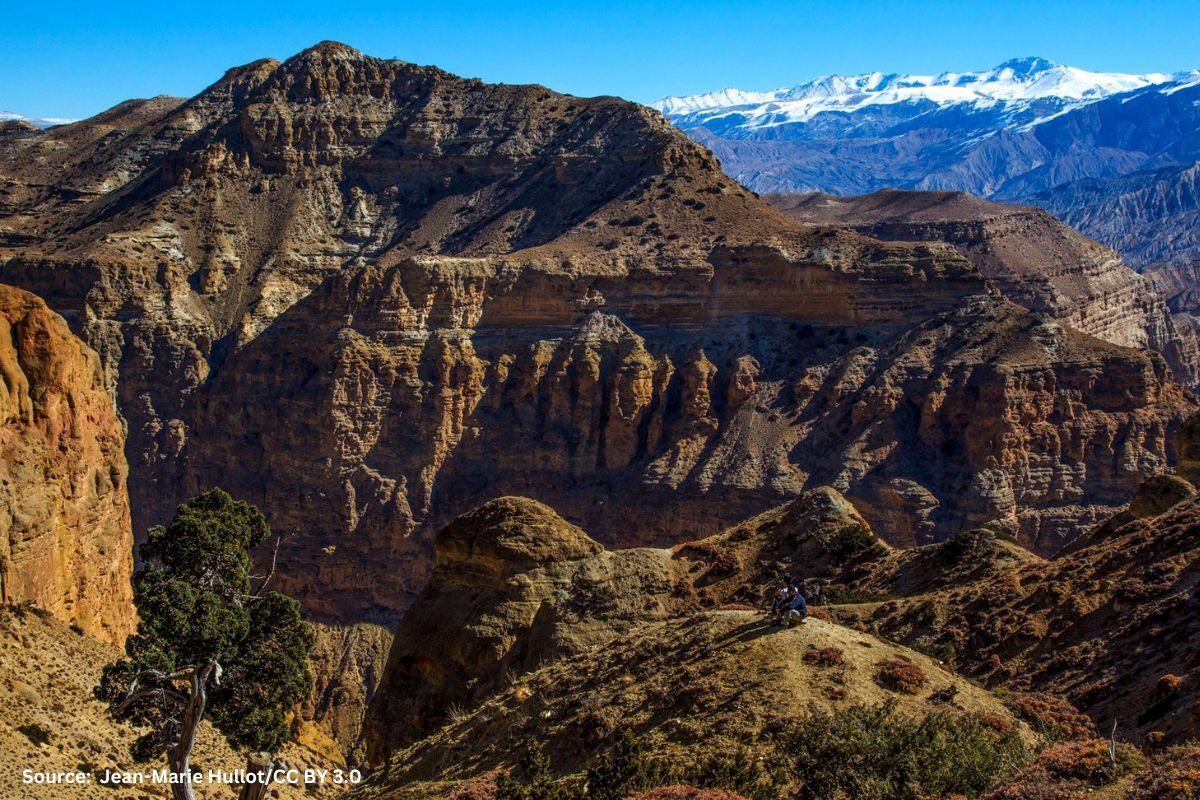- Shangri La, a fictional paradise in the Himalayas, contrasted with today’s tragic reality.
- Uncontrolled development and urbanization causing harm to Himalayan ecosystems.
- Architect Rajat Kapoor advocates local methods for sustainable construction.
- Environmentalist Dr. Seema Javed highlights climate change’s impact on fragile mountains.
- Suresh Nautiyal emphasizes the need for mindful development to protect the Himalayas.
Nishant: In the year 1933, author James Hilton mentioned a fictional valley, Shangri La, located somewhere in the Himalayas, in the novel Lost Horizon. This valley had very beautiful views. It is believed that James Hilton was fascinated by the beauty of the Himalayas, which led him to conceive Shangri La.
Himalayas: Shangri La lost, tragedy unfolds
But today, no one would have been able to imagine Shangri La if James Hilton had seen this form of the Himalayas. Today, the Himalayas have just become a picture of tragedy.
Random buildings and incomprehensible development are forcing these mountain ranges to take revenge on us. But if we do not build the buildings, where will the growing population stay? And if we do not cut roads through the mountains for development, how will economic activities happen?
Rajat Kapoor is not just an architect by profession, but a true conservationist dedicated to preserving the environment. They strongly advocate for constructing houses in the Himalayan region using local and traditional methods.
Justifying their position, Rajat said, “The field of architecture primarily revolves around European techniques, leading most architects to replicate what they learn. However, in the case of the Himalayas, such structures are not suitable. Constructing large concrete buildings here might result in a minor mountain crack turning into a major catastrophe.”
So, what’s the treatment?
“It’s fashioned using locally available materials, traditionally designed. In essence, we incorporate concrete and wood in construction, considering today’s practicalities.” He elaborates, “However, current policies complicate matters. Even desiring to use wood becomes unfeasible due to restrictions. These restrictions render it impractical and escalate costs.”
Rajat holds that raising awareness is the initial approach. He asserts, “People need to grasp the contrast between Himalayan slopes and Uttar Pradesh soil. We can’t construct anything here to boost our ego, unlike what’s feasible in plains like Uttar Pradesh.”
Backing his argument, environmentalist Dr. Seema Javed notes that it’s not just Himalayan awareness but also crucial to comprehend climate change’s impact on these mountains. She explains, “Himalayas formed from Indian-Eurasian plate collision.
Northward Indian Plate motion exerts constant rock pressure, weakening them and elevating landslide risk.” Amid changing climate, she underscores, “Himalayas are highly vulnerable ecosystems. Recent heavy rains, landslides, and floods are climate change manifestations. Global warming increases air moisture absorption capacity, impacting rain intensity and quantity. These events cause life and property losses.”
Himalayas’ protection requires mindful development
Regarding rising population pressure and developmental activities impacting these fragile mountains, Suresh Nautiyal, Founder President of India Greens Party, comments, “Population growth is a tragedy. We’ve delayed addressing this issue, yet there’s still time. For development, we must grasp that the plains’ definition doesn’t apply to hilly regions. To save the Himalayas, we need understanding and alignment.”
Undoubtedly, hurting the Himalayas means self-infliction. Portraying the Himalayas with personal desires paints a tragic picture.
Support us to keep independent environmental journalism alive in India.
Keep Reading
MP farmers battle stray animals, and sleepless nights to protect crops
Pesticides and agriculture threaten Sarus Cranes at Indore’s Yashwant Sagar wetland
Changing weather patterns impacts soybean crops in the Dewas region of MP
Follow Ground Report on X, Instagram and Facebook for environmental and underreported stories from the margins. Give us feedback on our email id greport2018@gmail.com.
Don’t forget to Subscribe to our weekly newsletter, Join our community on WhatsApp, Follow our Youtube Channel for video stories.













